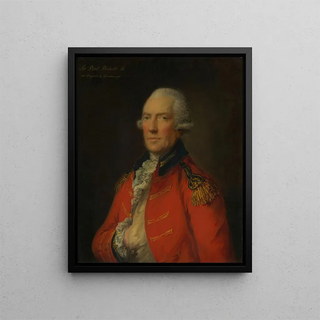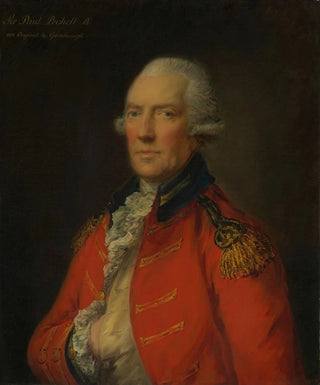Art print | Lieutenant-colonel Paul Pechell - Thomas Gainsborough


View from behind

Frame (optional)
In the world of art, certain works transcend the simple frame to become living witnesses of an era, of a personality. The art print of Lieutenant-colonel Paul Pechell by Thomas Gainsborough is a perfect example. This piece, imbued with delicacy and depth, immerses us in 18th-century England, a time when art and nobility were closely intertwined. Gazing at this portrait, the viewer is instantly transported into the universe of British high society, where every detail, every brushstroke seems to tell a story. The art print of this masterpiece allows us to rediscover Gainsborough's finesse and the elegance of the subject while offering a window into the past.
Style and uniqueness of the work
Thomas Gainsborough's style is renowned for its ability to capture not only the physical appearance of his subjects but also their essence. In the portrait of Lieutenant-colonel Paul Pechell, the artist demonstrates exceptional mastery of light and shadow, creating an atmosphere of dignity and serenity. The drapery of the uniform, painted with remarkable precision, almost seems alive, while the penetrating gaze of the colonel conveys an impression of strength and determination. Gainsborough uses rich, nuanced colors that add an extra dimension to the work. The balanced composition, combined with the detail-oriented approach, testifies to his unparalleled talent for portraiture. Every element of this piece, from accessories to facial expressions, contributes to a captivating visual narration, making this portrait an emblematic example of 18th-century art.
The artist and his influence
Thomas Gainsborough, born in 1727, is one of the most influential painters of his time. His style, often associated with the rococo movement, marked a break from the academic conventions of his era. Gainsborough managed to breathe new life into portrait painting by integrating landscape elements and favoring a more intimate and personal approach to his subjects. His influence extended well beyond his time, inspiring many artists across the centuries. His ability to capture the psychology of his subjects and evoke deep emotions

Matte finish

View from behind

Frame (optional)
In the world of art, certain works transcend the simple frame to become living witnesses of an era, of a personality. The art print of Lieutenant-colonel Paul Pechell by Thomas Gainsborough is a perfect example. This piece, imbued with delicacy and depth, immerses us in 18th-century England, a time when art and nobility were closely intertwined. Gazing at this portrait, the viewer is instantly transported into the universe of British high society, where every detail, every brushstroke seems to tell a story. The art print of this masterpiece allows us to rediscover Gainsborough's finesse and the elegance of the subject while offering a window into the past.
Style and uniqueness of the work
Thomas Gainsborough's style is renowned for its ability to capture not only the physical appearance of his subjects but also their essence. In the portrait of Lieutenant-colonel Paul Pechell, the artist demonstrates exceptional mastery of light and shadow, creating an atmosphere of dignity and serenity. The drapery of the uniform, painted with remarkable precision, almost seems alive, while the penetrating gaze of the colonel conveys an impression of strength and determination. Gainsborough uses rich, nuanced colors that add an extra dimension to the work. The balanced composition, combined with the detail-oriented approach, testifies to his unparalleled talent for portraiture. Every element of this piece, from accessories to facial expressions, contributes to a captivating visual narration, making this portrait an emblematic example of 18th-century art.
The artist and his influence
Thomas Gainsborough, born in 1727, is one of the most influential painters of his time. His style, often associated with the rococo movement, marked a break from the academic conventions of his era. Gainsborough managed to breathe new life into portrait painting by integrating landscape elements and favoring a more intimate and personal approach to his subjects. His influence extended well beyond his time, inspiring many artists across the centuries. His ability to capture the psychology of his subjects and evoke deep emotions






